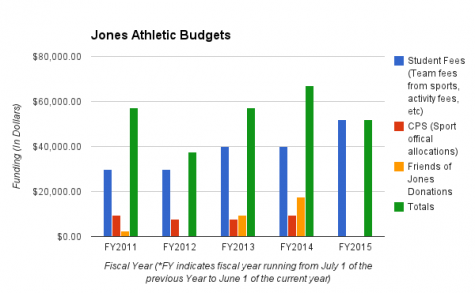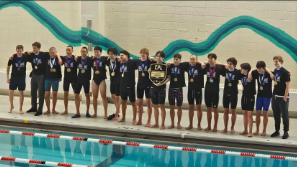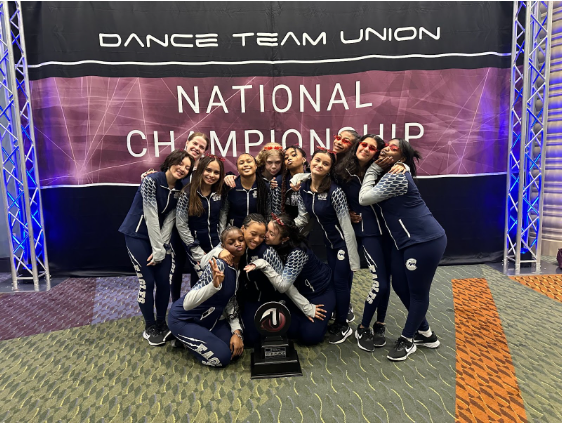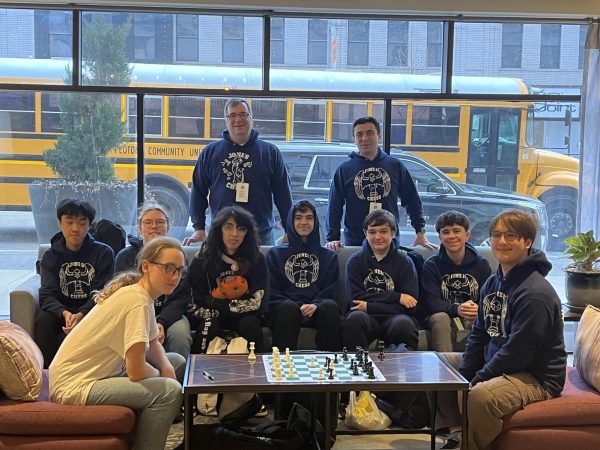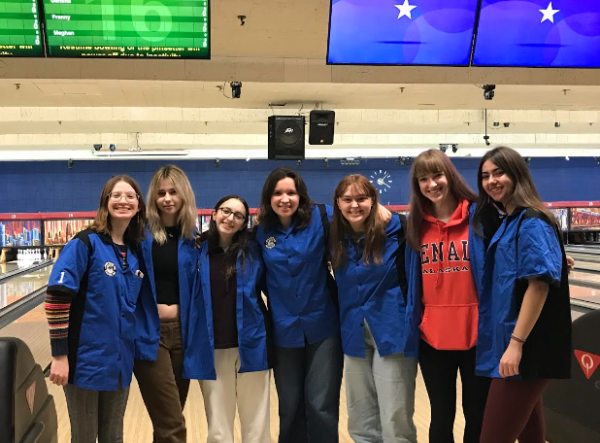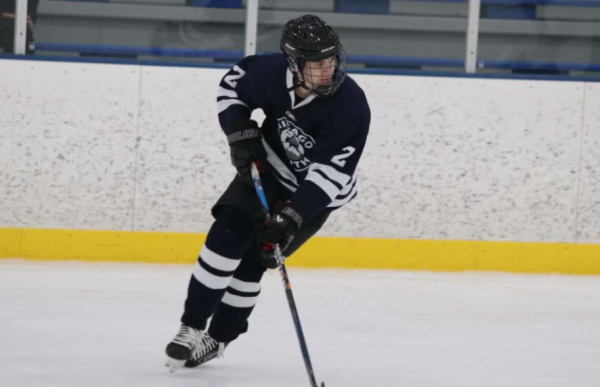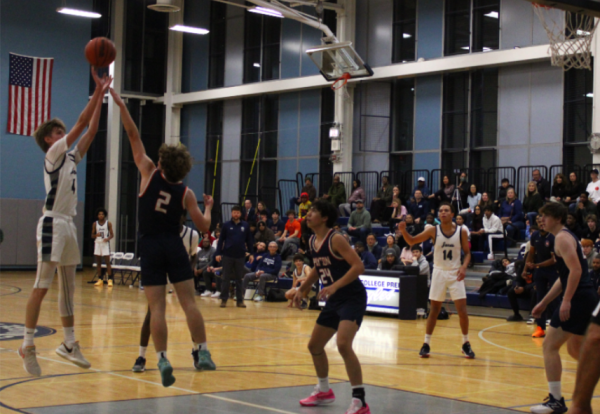Battling the athletic budget
Transportation poses “biggest problem” for Athletics’ pocketbook

Graph by Taylor Brooks '15; information courtesy of Jones Business Manager Jeremy Voigt
BUDGET BREAKDOWN: A combination of CPS funding, student fees and money kicked in from Friends of Jones keep athletics running, kicking, and swimming.
Receiving limited funding for athletics from Chicago Public Schools, Jones Athletic Director, Frank Griseto, stretches the already low budget leaving little, if any, funding for individual teams.
Jones Director of Finance and Operations, Jeremy Voigt, broke down the athletic budget which consists of three sources. In the 2013-2014 school year, student entry fees made up 59.7% of the budget, contributing $40,000 out of the final total of $66,969. Friends of Jones came up big, adding $17,500 to the budget that year; a majority of which went to transportation. Finally, out of the funds given to Jones from CPS, $9,469 of which went towards the athletic budget, helping increase the grand total by 14.1%.
Transportation has posed the biggest problem for those looking to divvy the budget between all 23 sports programs at Jones: nine for boys, nine for girls, and five offered as co-ed.
Prior to the addition of the South Building, most teams commuted in some form every day; whether to other schools, walking to Grant Park, or taking the bus to Near North. Located 5.1 miles north of Jones, Near North is a 37 year old metropolitan high school that was the central location for all baseball, soccer, volleyball, and basketball programs. It continues to act the primary facility for baseball and soccer. All seven of these teams typically practiced Monday through Friday.

DIVE IN: Jones’ pool on the 7th floor gives a new home for the combined Jones – Payton swim and diving teams, as well as water polo.
The beauty of Near North was that CPS paid for it. “We did not have to pay for the maintenance of the building. Right now [with the South Building], we’re paying all the bills. But while we were at Near North, not only for the gym but for the fields, the use up there, CPS paid directly for the bus transportation. It didn’t come out of our building budget” said Principal P. Joseph Powers
The misconceptions about the lightened transportation budget due to the new gym, pool, weight, and dance facilities have been destroyed. “The cost of the transportation basically soaks up all of the budget that we have. For example, a daily bus ride to a game is about $195 and a Saturday buses go anywhere between $275 to $350. So, we try to get grants and donations from other people,” said Griseto.
Since a majority of the budget is allocated towards transportation, each sport program has to supply for itself; meaning, new uniforms, new gear, and basic equipment must be funded for through fundraising organized by each program. Jones sports use the restaurants, around the school to their advantage by getting a small percentage of sales that the restaurant will give the team.
“We did the raffle tickets [and we will] continue to do stuff we did in the past, those actually worked pretty well. Its not something that kids in school really contribute to, but it’s something that people’s family can make money [off of] bringing raffle tickets home; that is something that really works,” said Devin Hampton ’15. “We’ll probably do something with a restaurant, similar to how baseball did with Epic Burger, cause that seems like a decent one (fundraiser) but it is harder because you can’t sell stuff.”
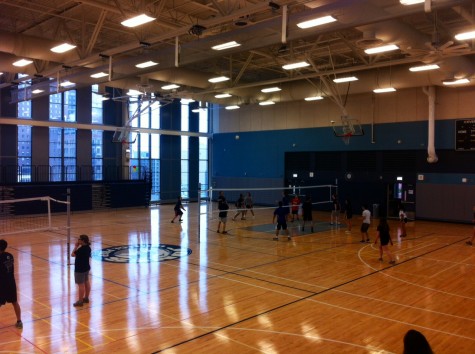
EAGLE’S NEST: Jones new gymnasium sits perched atop the one-year old south building. Home to basketball and volleyball, having a gym in the school eases the athletic budget that used to have to transport athletes to Near North for home competitions.
Selling food during the lunch periods and right after school was the biggest fundraising opportunity available for Jones organizations because its led to direct support from students and faculty. There has been a new national policy put in place that prevents clubs, sports and classes from selling food before 3:45pm. Making fundraising difficult due to the fact that school end at 3:15pm.
The amount of money allocated to athletics, specifically sports programs, varies greatly each year. As the size of the student body continues to play a large role in determining the amount of money given to Griseto to budget, it is safe to say fundraising will begin to affect individual programs more than anything. “I think that sports, you need proper shoes, shirts, etc. [They are] important factors that go into the stuff we buy for basketball, that goes into level of play” said Hampton. Student athletes agree that a successful program requires some form of budgeting. That budget, as it appears, will be coming out of the work of the student athletes who fundraise for their program.
